Mesoreodon floridensis
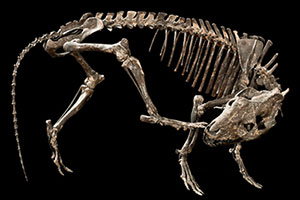
Quick Facts
Common Name: Florida oreodont
With six partial skeletons, five with skulls, this is the only well known oreodont from Florida. From the late Eocene to the very early Miocene, oreodonts are extremely common in the western United States, but are relatively rare in Florida.
Among living artiodactyls, oreodonts are most closely related to the camels and llamas.
Age Range
- Latest Oligocene epoch; late early Arikareean (Ar2) land mammal age
- About 25 to 24 million years ago (MacFadden and Morgan, 2003)
Scientific Name and Classification
Mesoreodon floridensis MacFadden and Morgan, 2003
Source of Species Name: this species is named after the state of Florida.
Classification: Mammalia, Eutheria, Laurasiatheria, Artiodactyla, Camelidamorpha, Merycoidodontoidea, Merycoidodontidae, Merycoidodontinae
Alternate Scientific Names: none
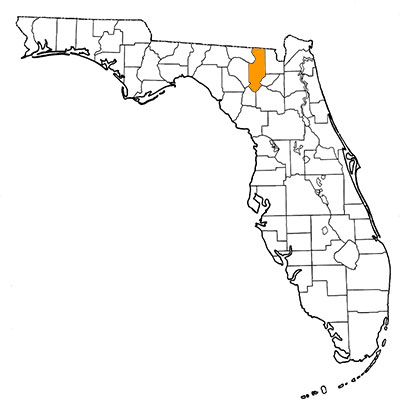
Overall Geographic Range
This species has only been found in the type locality, White Springs 3B, in the bed of the Suwanee River near White Springs, Columbia County, Florida (MacFadden and Morgan, 2003).
Florida Fossil Occurrences
Florida fossil sites with Mesoreodon floridensis:
- Columbia County— White Springs 3B
Discussion
Oreodonts are an extinct group of mammals in the order Artiodactyla (Lander, 1998). Modern day artiodactyls include animals such as pigs, cows, deer, camels, pronghorns, giraffes, and hippos. Among living artiodactyls, oreodonts are most closely related to the camels and llamas (Spaulding et al., 2009). Oreodonts were typically small- or medium-sized artiodactyls that were endemic to North America. While fossils of oreodonts are commonly found in western North American assemblages dated to the latest Eocene, Oligocene, and Miocene epochs (particularly in the badlands of Nebraska and South Dakota), they are rarely found in Floridian sites of the same age and are often only known from scarce, fragmentary materials (MacFadden and Morgan, 2003). Mesoreodon floridensis is an exception to the rule of scarcity of oreodont fossils in Florida vertebrate faunal assemblages.
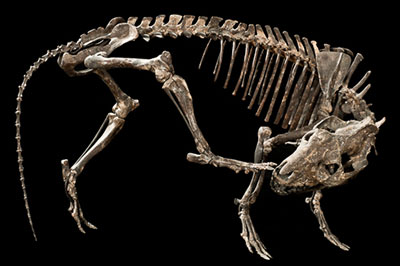
Mesoreodon floridensis is known from incomplete skeletons of 6 individuals at the White Springs 3B site on the bed of the Suwanee River near White Springs, Columbia County, Florida. Described in MacFadden and Morgan (2003), the material included 5 mandibles and 4 skulls, as well as many postcranial elements. Based on these fossils, it is believed that an average member of this species had a body length of about 1.1 m (3.5 ft), a shoulder height of about 0.5 m (1.55 ft), and weighed about 25 kg (55 lbs). These dimensions make Mesoreodon floridensis a medium-sized oreodont (MacFadden and Morgan, 2003). A reconstructed skeleton belonging to this species is on permanent display at the Florida Museum of Natural History (Figure 2).
Mesoreodon floridensis is characterized by a number of features. Similar to other oreodonts, the skull is large and robust compared to the size of the rest of the body. The cranium has narrow zygomatic bones, a short sagittal crest, and a depression or vacuity where the maxillary, frontal, and lacrimal bones meet in front of the orbit (Figure 3). In modern artiodactyls with a similar depression, it houses a preorbital scent gland. Compared to other species of Mesoreodon, the nuchal crest is wide. The cranium of Mesoreodon floridensis also has a somewhat inflated auditory bulla. On the dentary, the horizontal portion of the ramus is deep, the angular process is rounded and enlarged, and the coronoid process is minute and shaped like a triangle (Figure 4; MacFadden and Morgan, 2003).
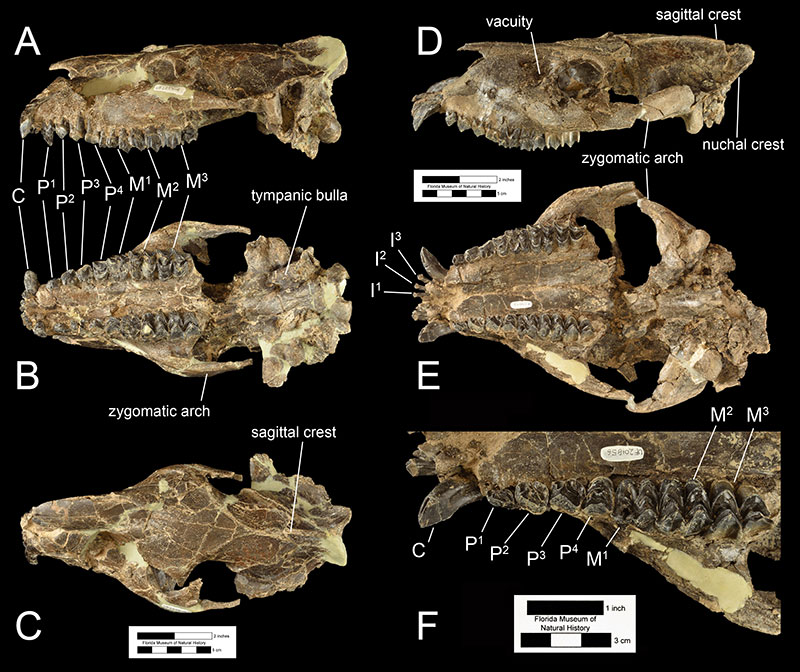
The teeth of Mesoreodon floridensis are generally more hypsodont than other oreodonts, but are still considered to be brachydont. Unlike other Mesoreodon, the teeth of Mesoreodon floridensis exhibit imbrication, overlapping, within the dental arcade. While other Mesoreodon species have a small space (diastema) between the first and upper second premolars, the same teeth show some overlap in the maxilla of Mesoreodon floridensis. In addition, the upper premolars are proportioned differently, such that the third premolar is wider than long, which is not the case for other Mesoreodon. The lower premolars in the mandible also show imbrication, especially between the second and third premolars. In addition, the lower canine is incisiform while the first lower premolar is caniform and has an occluding surface with the large upper canine (MacFadden and Morgan, 2003).
Mesoreodon floridensis is distinguished from other oreodonts that have been found in Florida primarily by a difference in size. Compared to a specimen referred to Phenacocoleus luskensis from the Martin-Anthrony roadcut locality, the dimensions of the teeth of Mesoreodon floridensis are about 20% larger and show more crowding of the upper first and second premolars. Mesoreodon floridensis appears to be much larger than the few specimens of oreodonts recovered from the Thomas Farm locality (MacFadden and Morgan, 2003).
Based on the anatomy of the animal and an analysis of the White Springs locality in which the fossils of Mesoreodon floridensis were recovered, it is thought that this species was a browser that lived in a scrub woodland habitat near an estuary or swamp near the ocean. In addition, the medium body size and apparent lack of sexual dimorphism among the six skeletons known for this species suggest that Mesoreodon floridensis foraged in herds with individuals of both sexes (MacFadden and Morgan, 2003).
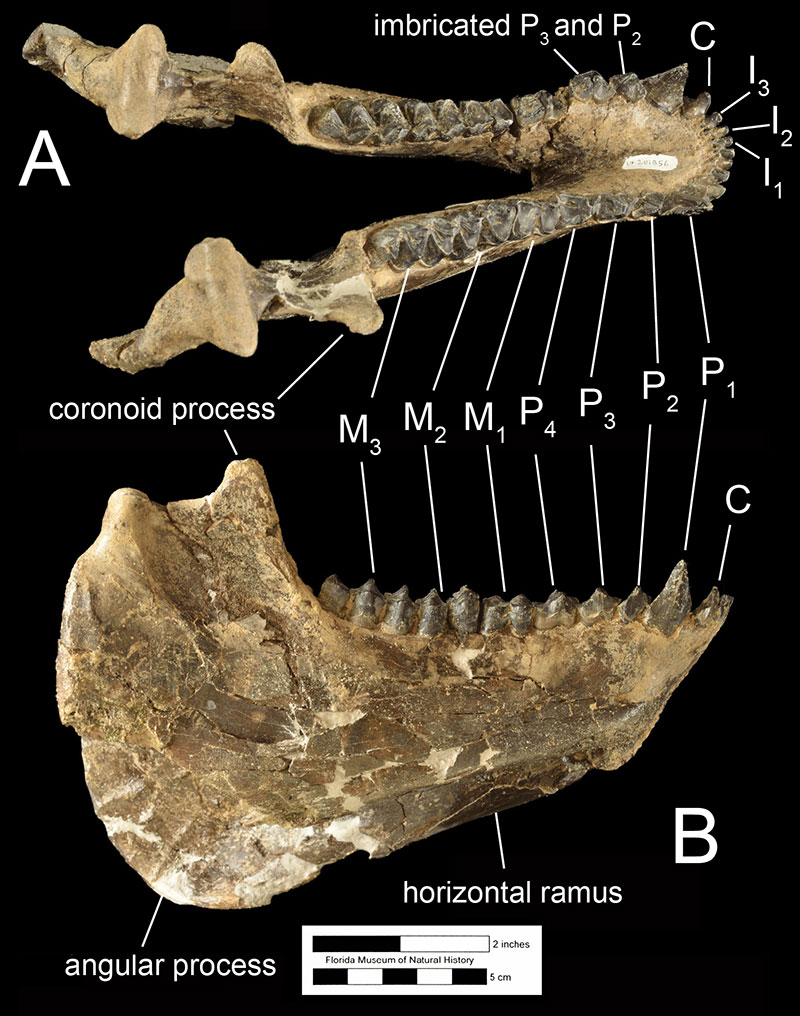
Sources
- Original Author(s): Arianna Harrington
- Original Completion Date: May 1, 2015
- Editor(s) Name(s): Richard C. Hulbert, Jr. and Natali Valdes
- Last Updated On: May 4, 2015
This material is based upon work supported by the National Science Foundation under Grant Number CSBR 1203222, Jonathan Bloch, Principal Investigator. Any opinions, findings, and conclusions or recommendations expressed in this material are those of the author(s) and do not necessarily reflect the views of the National Science Foundation.
Copyright © Florida Museum of Natural History, University of Florida